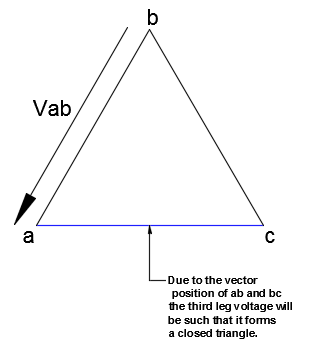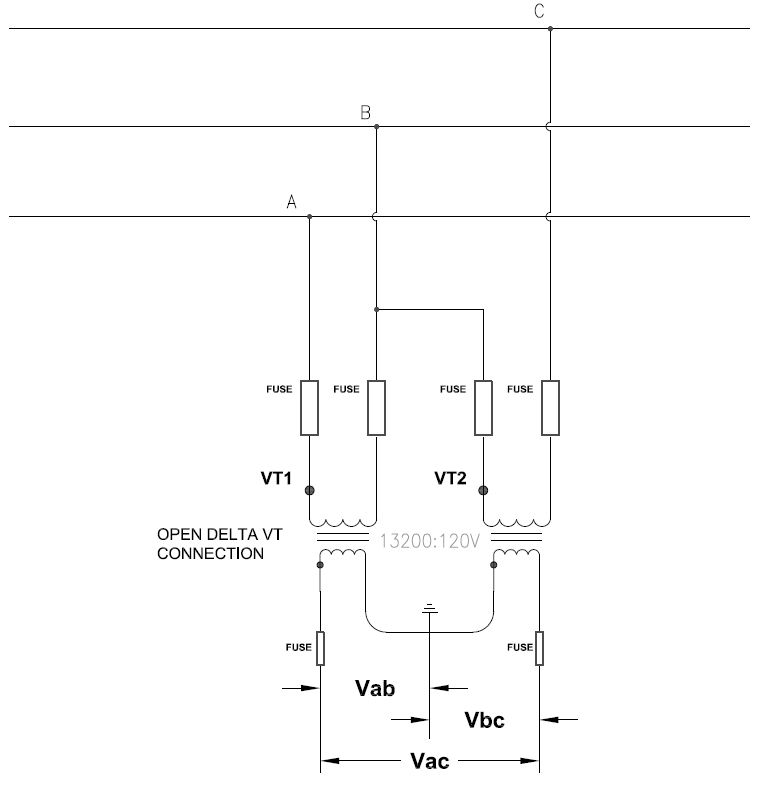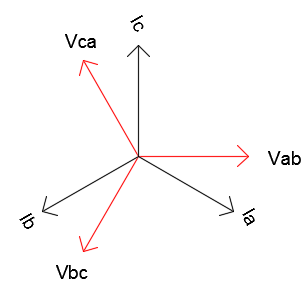Open Delta Transformer uses two single phase transformers to provide three-phase supply. A balanced three-phase voltage supply can be obtained by connecting the transformers in open delta or vee connection. In this connection, currents which would flow in the windings of the third transformer are shunted in to windings of the two transformers in open delta. The line voltages are transferred from primary to secondary by ordinary magnetic induction.
Also Read: Broken Delta
Advantages of open delta transformer
- Can provide power to three wire ungrounded service by using only two single phase transformers.
- Can provide power to four wire grounded service by having the midtap grounded on one leg of the transformer.
- Three single phase transformers connected in closed delta connection can be rewired to open delta in case one transformer is taken out of service for maintenance, though at reduced kVA capacity.
Disadvantages of open delta transformer
- Even when open delta transformer is load balanced, this connection is prone to voltage unbalance.
- The combined transformer kVA has to be 115% of the load kVA.
- Not very efficient.
Theory of operation of open delta transformer
Consider a three-phase source connected to an open delta transformer as shown in the figure below. The secondary of the transformer is open circuited. The voltage as measured across from A-B, B-C, C-A will be the same as that which would be measured across the source (generator). This means the absence of the third winding has no impact on the distribution of voltage across the three corners of the delta system formed by two single phase transformers. The phase relationship between the three voltages will also be similar to what is expected on a three-phase delta system. This is a key idea to be understood. Due to magnetic induction secondary voltage with ideal three phase voltage and phase relationship will be induced from primary to secondary. Now we have three phase voltage at the secondary open delta terminals.

Open Delta Connection
Open delta transformer voltage calculation
To prove open delta voltage calculation mathematically, apply Kirchhoff’s Voltage Law across the secondary windings,
We know that in a delta system,
Where V is the voltage across any of the two secondary windings.
It can be seen from the equation above that the voltage across the third leg [ac] with ‘missing’ transformer is V∟120 which is exactly what we would have expected in a delta system. This is due to the fact that in a three-phase system, with voltages displaced by 120 degrees, the vectors form a closed loop with the sum of the three voltages adding up to zero. This is basic mechanism of ‘deriving’ the third phase by using only two transformers. The same theory applies to primary side open delta as well. In the vector diagram below, ‘ab’ and ‘bc’ are the applied voltages. The voltage as measured across the open winding ‘ac’ will be such that it will close the delta voltage triangle.

Open Delta Voltage Triangle
Current Flow in open delta Transformer
Consider a unity power factor load connected to the open delta transformer as shown below.

Open Delta
As discussed above, the three-phase voltage at the load terminals will have equal magnitude with 1200 phase angle displacement. Due to the nature of phasor relationship between delta voltages and currents, the line currents will have a 300-phase angle with respect to the delta voltage vectors.
Consider the vector position shown in the figure above. At the instant when magnitude of Ib reaches the maximum, Ia and Ic each have less than their maximum amplitudes and flow in opposite direction to Ia. This is shown in the three-phase diagram above. If Ib is flowing from transformer to the load Ia, Ic will flow from load to the transformer. Ia flows through transformer T1 and Ic flows through transformer T2. This pattern of current flow will change depending on the position of the vectors.
Depending on the position of voltage vectors, either both transformers share half the total load power, one carries the entire load while the other carries no load. Thus, the transformers are loaded not symmetrically during one complete cycle of AC voltage waveform.
Due to the fact that in open delta we do not have transformers across winding ‘ac’, the currents in two single phase transformers will be equal to the line currents and lead and lag by 300. This means even at unity power factor load; the transformers have internal power factor of 86.6% (Cos30=86.6). One transformer will have leading power factor and the other operates at lagging power factor. For a balanced load with unity power factor, one transformer has a power factor of cos(30-ø) and the other has a power factor of cos(30+ø). The voltage regulation in both transformers is hence different. This is reason that open delta transformers even when perfectly balance loaded, the secondary voltage is unbalanced. Voltage unbalance is less with lower-impedance transformers.
In other words, one transformer is producing reactive power and the other is consuming reactive power. This is the reason that the power output from the open delta transformer is 57.7% instead of the expected 66.7%.
Open delta transformer Calculations
For the vector position indicated above let’s derive the total KVA of the open delta transformer.
1st Transformer [T1]:
Vab=V, all three voltages are same across the open delta winding.
2nd Transformer [T2]:
Vbc=V, all three voltages are same across the open delta winding. Negative of Ic is taken to align Ic with the voltage vector.
Total KVA transformed by two transformers is:
KVA transformed by each transformer is:
This means the total instantaneous power transformed by each transformer forming a open delta system is only 86.6% of its rated capacity.
As an example, if we have two single phase transformers of 300KVA each capacity connected in open delta, the maximum load that can be connected to the transformer is 600kVA*0.866=520KVA.
How does open delta transformer compare with regular three phase transformers?
kVA transformed by open delta transformer is given by
kVA transformed by regular three-phase transformer (closed delta) is given by
![]()
Power Factor is assumed to be unity in both the cases above.
The ratio of kVA between open delta and regular three-phase transformer is
This means an open delta transformer will only be able to deliver 57.7% of the capacity of an equivalent three phase delta transformer with similar voltage and load current.
Alternate way of stating the same is that if a delta-delta transformer is converted to open-delta transformer, then the new transformer will only be able to supply 57.7% of the kVA of the original delta-delta connection.
Note that a common mistake is assuming the new kVA should be 2/3 of the original kVA. As can be seen that is not the case and the new kVA is 1/√3 while converting from delta-delta to open delta.
How to size open delta transformer for a given load?
To size an open delta transformer the total kVA of the transformer has to be 115% of the connected load.
Open delta connection for voltage metering applications
Application of open delta connection for providing power to customers is getting rarer these days. Due to the inherent voltage unbalance issues, new connections using open delta is not common.
However, a common use of open delta connection is in voltage metering application especially at MV (Medium Voltage) (>1kV). The advantage provided by open delta connection for metering at MV is that only two voltage Transformers (VT) are required. VTs are expensive at higher voltages and hence open delta connection provides an economical way to gather voltage data. Since metering circuits do not have any significant load (burden), there won’t be any load current and hence no voltage unbalance issue.
The theory on how three phase voltages can be derived using open delta connection is same as provided in top section of this article ‘Theory of operation of open delta transformer’.
Below is a schematic of open delta connection as applied in medium voltage metering circuits.

Open Delta Connection for Voltage Metering
Advantages of open delta connection in voltage metering applications
- Even though only two VTs are in the circuit, we WILL get all three phase voltages (Vab, Vbc, Vac).
- Since the primaries of VT are not grounded the VT is less prone for ferroresonance damage.
- This connection is well suited for application in ungrounded delta system voltage metering.
- Is more economical compared to connecting three VTs in delta or wye formation.
- Since the secondary side of the VT can be grounded it stabilizes the voltage and provides protection in case one phase short circuits to ground.
Disadvantages of open delta connection in voltage metering applications
- Only line-line voltages are available for measurements. Line-neutral voltage is not available using this connection.
- Since the secondary ‘b’ phase is grounded, people often assume there is line-neutral voltage available and make wrong wiring connections to power meters, relays etc. Open delta connection only provides line-line voltage and not line -neutral voltage.
Also Read:
Open Y-Open Delta
Neutral Inversion and Neutral Displacement
Transformer Connections: Phase Shift and Polarity









